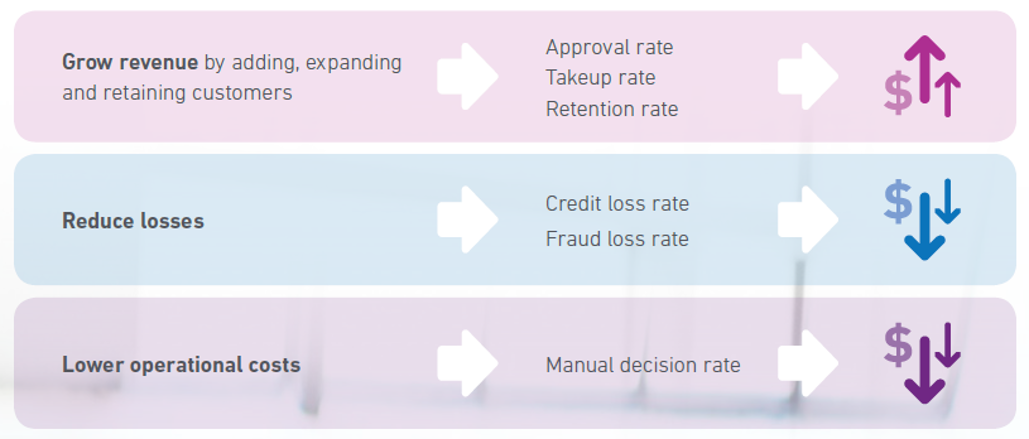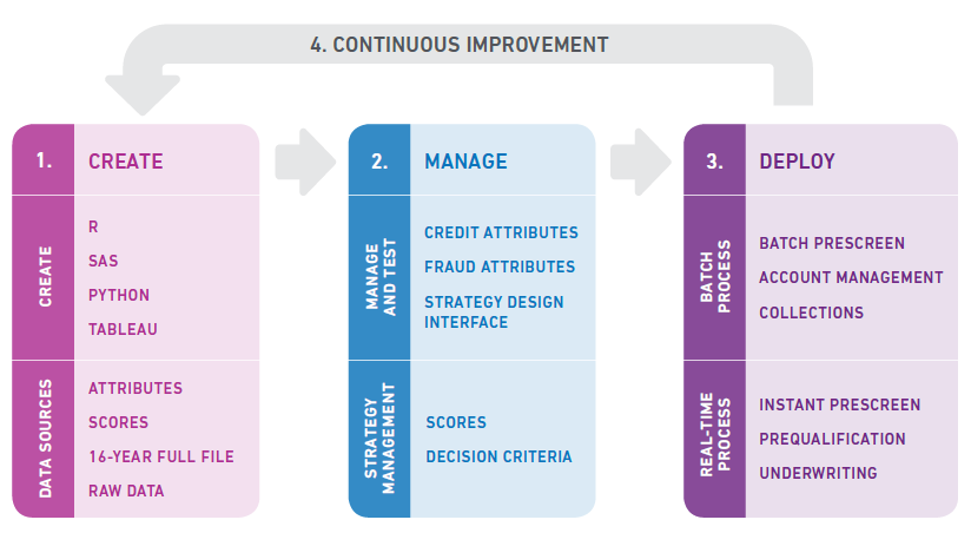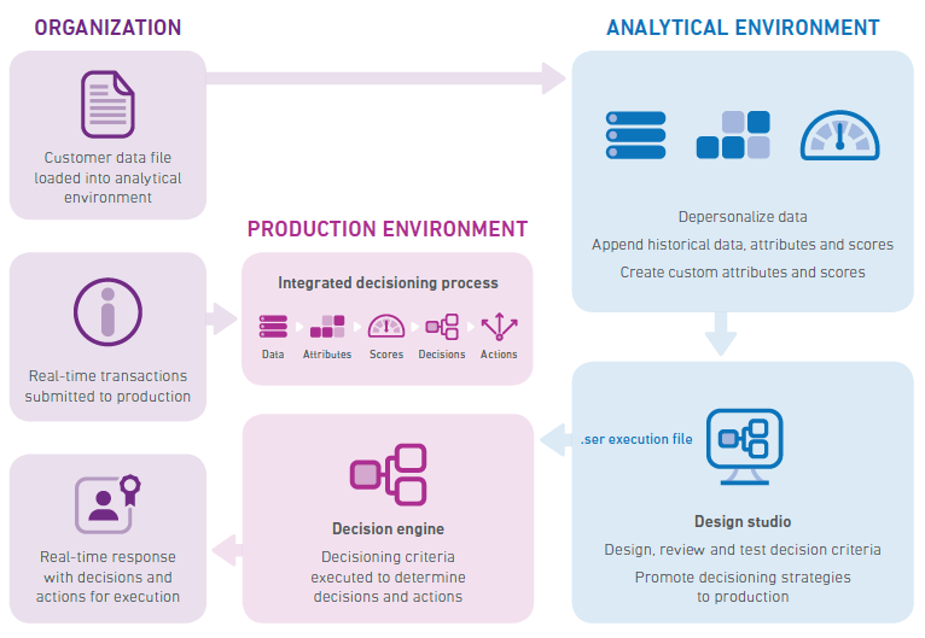You make thousands of important decisions — across lines of business, the Customer Life Cycle and channels — every day. A good decision can help you acquire a consumer you might have otherwise declined due to bad decisioning (or missed out on because of a slow manual decision). Conversely, a bad decision caused by inaccurately assessing risk can mean acquiring a consumer you should have declined, which can result in a charge-off of $10,000 or more.
Make better decisions
Better decisions drive a quantifiable return on investment by positively impacting key performance metrics like approval, takeup, loss and manual review rates. For example, all else being equal, modifying decision criteria to improve approval rates will result in acquiring more customers, which means more revenue and greater profits. Better credit decisions drive direct business benefits (and a quantifiable return on investment).

Improving your business performance with a decisioning ecosystem
You need to make faster, better, more consistent decisions, while remaining in good standing with regulators. An integrated decisioning ecosystem is a living environment that drives better data-driven decisions to help improve your business performance.

- Create includes the ability to experiment and create best-in-class attributes and scores using technologies like Python, R and SAS in a nonproduction environment, leveraging bureau data, your own data and alternative data.
- Manage includes the ability to configure, manage and test (in a nonproduction environment) best-in-class decision criteria that use these attributes and scores.
- Deploy includes the ability to deploy the decision criteria into production environments quickly and easily to drive better decisions and improved business performance.
- Continuous improvement includes the ability to consume the results of the decisions and use the experience to inform modified decision criteria that will drive even better future business decisions as part of a continuous learning environment.
Real-time decisions within the ecosystem
The starting point for a decisioning ecosystem is the raw data needed to drive better decisions. You provide raw customer data, including “on us” data about your customers, which is loaded into your analytical environment. Your customer data is then augmented with historical credit data and attributes, depersonalised for analytical purposes. You then use this analytical environment to create and define your own custom attributes, scores and decision criteria using tools like R and Python, as well as techniques including extreme gradient boosting models. Within the design studio, you can configure and define the decision criteria, including challenger strategies, that will ultimately drive better decision outcomes. When you’re confident in your new decision criteria, you can promote your changes to production using a new configuration file (with no recoding necessary). Once this is completed, the decisions for subsequent real-time transactions will be rendered automatically using the new decision criteria.

Dealing with digital developments requires an adaptive, agile approach. In a competitive world, it’s imperative to be able to spot opportunities, assess ideas quickly, and test and learn.
We believe analytics needs to be much easier for businesses to access, and that you shouldn’t have to independently invest in this, or be a data scientist in order to benefit. Instead accessing the tools and expertise you need to understand the opportunities for your business will be beneficial in the long-term as change occurs, and new developments occur. By being able to access sophisticated techniques, which are continually invested in and contain the highest level of sophistication, will be hugely beneficial for every business moving forwards.
###
Download the white paper to learn more.
